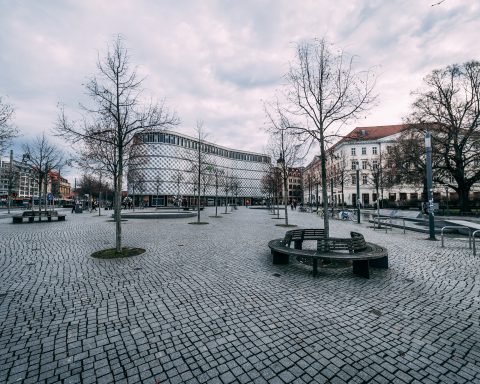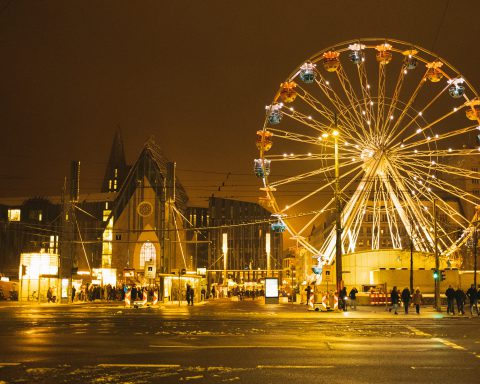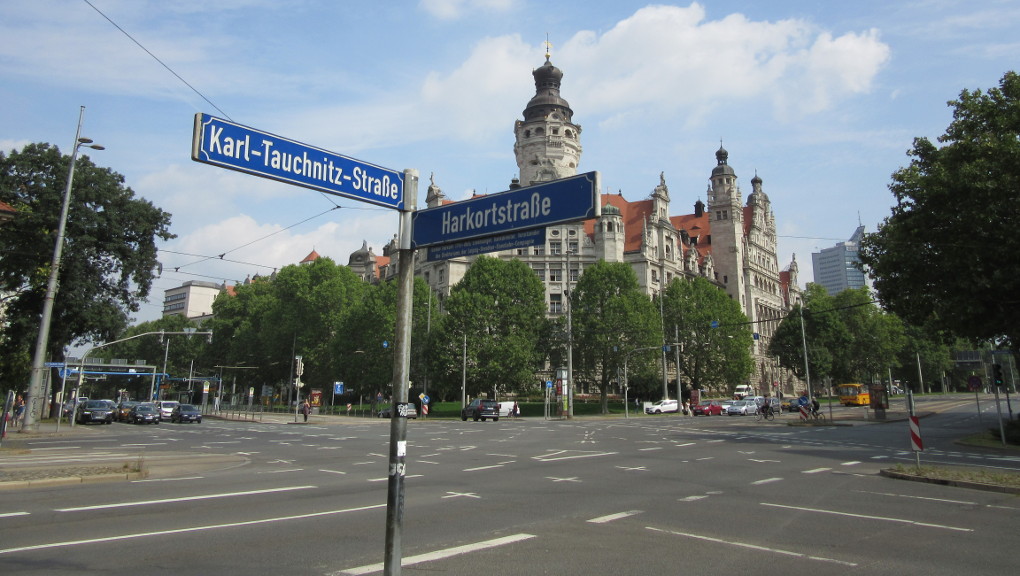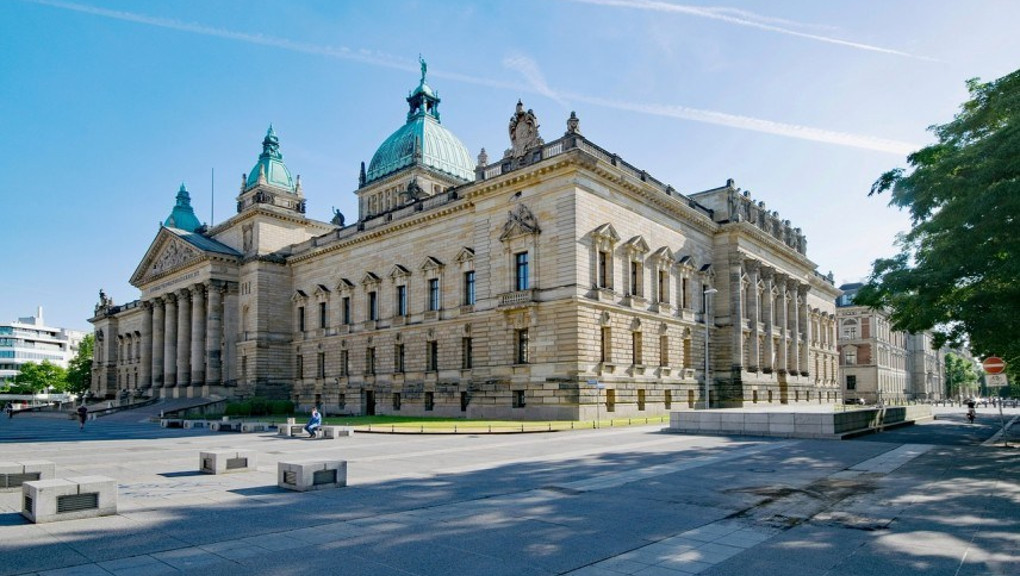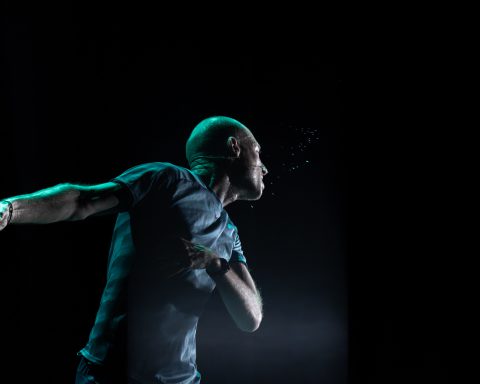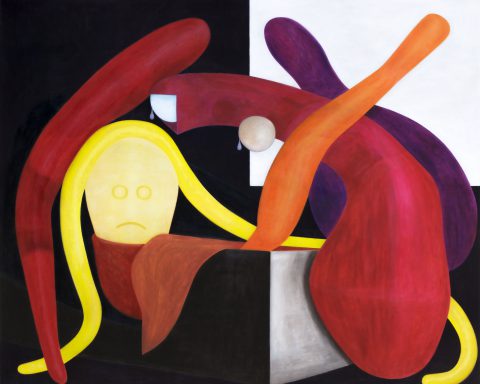Though I had never met him personally, I am feeling the collective sadness at the news of the death of Arno Rink. The first time I heard his name was during my first interview with Jochen Plogsties. After seeing a show of recent HGB graduates in Berlin, he liked that the focus was on technique and not on personality like it seemed to be in so many other places. He came to Leipzig to apply. If memory serves me, the course was actually full, but he and Arno Rink had an immediate chemistry. Rink saw something in Plogsties that was worth developing.
Only three months shy of his 77th birthday, Arno Rink was still in full force.
His wife says he was in the studio as much as health would permit. So many plans still to complete. He was in the process of working with the Museum der bildenden Künste Leipzig on the retrospective, Arno Rink; I paint, which will be exhibited in spring of 2018.
Excerpt from MdBK 6 Sept Facebook post:
Leipzig has lost one of its most important painters and draughtsmen.
Arno Rink was an outstanding representative of the second generation of the Leipzig school and, as a teacher, a committed pioneer of the New Leipzig School.
He has always defended the freedom of painting with the courage to pathos. The sensuality of eros, as well as the suffering of man, are inscribed in his painting.
Anka Ziefer, curator at G2 remarked, “The collector (Hilldebrand) concentrates on artists of his own age and younger, however he appreciates also the artists of other generations and admires their work. For my work Arno Rink is important because as professor of the Academy of Fine Arts Leipzig he is partly responsible for the success of the younger generation. Under his aegis artists such as Franziska Holstein, Martin Kobe, Jochen Plogsties, Neo Rauch, Christoph Ruckhäberle, David Schnell, Katrin Heichel and many others developed their artistic language. I am deeply sorry to hear about his death and my thoughts today are with his family. ”
Likewise, I see Arno Rink as conduit for the first art movement of our century, the New Leipzig School.
Begining in 1962, he studied under Werner Tübke, Hans Mayer-Foreyt and Harry Blume at HGB. Rink started teaching there in 1979 and was headmaster from 1987 to 1995. This meant he was there to experience the changes as a result of the fall of the wall.
Born and raised in Thuringia, he had come to Leipzig to study. Leipzig, home of Max Beckmann who rejected abstractionism and, instead, chose to advance figurative painting.
In reference to how the wall had affected art in the GDR, Arno Rink explained, “If you want to talk of an advantage, you can say it allowed us to continue in the tradition of Cranach and Beckmann. It protected the art against the influence of Joseph Beuys.”
While the rest of the Western world, including Western Germany, had moved away from representational painting, the East had continued it in the traditional way. When the wall came down, the HGB added a media department and many students, especially those who had grown up in the East, were eager to experience video, installation and happenings in the manner of the dark side (Beuys). Those who came to Leipzig to study painting in the historical tradition were uncool.
This did not stop Arno Rink and Sighard Gille from continuing their technical, rather than emotional, approach. Students were taught to paint, not to think about subject matter. “We learned how to construct a house in double perspective, or a staircase that spirals up,” says Tilo Baumgärtel. I see it as the same approach used by Bauhaus or Frank Lloyd Wright. First you learn to build a house. Then you learn to design one.
“The difference between Leipzig and the other schools in Germany is that here there is more discussion about how to build the painting and less about what and why,” says Christoph Ruckhäberle.
In the GDR, painters were well respected, but I think it was more like having a job than having a status. You had a service to perform, one of propaganda. This environment also led to the use of symbolism in the work. One could keep one’s respectability and criticise society at the same time.
“That was a possibility, using multiple layers, because the functionaries weren’t the brightest people,” Arno Rink said. “Icarus plays an important role in Leipzig painting. He is able to fly – you can see it as a motif of fleeing – and he gets too close to the sun and falls down, like people who got close to power. Heisig, Rink, Tübke – everyone used Icarus, because it looked good as a figure and it also had another meaning.”
Where I think Arno Rink was the most generous, was in how he allowed his students to grow and develop. He taught them the skills they needed, but did not control how they used them. This is very evident when you look at the work of his students. Each one is an individual and is still evolving.
“Nobody paints a Sisyphus or Icarus anymore.”
“Artists are free to interpret the world without enigmatic tools. Back then, there were problems we had to cope with,” Rink said in 2006. “I think society today is quite superficial in many ways. It is only normal that painters include this superficiality in their work.”
With politics taking a front seat in our world today, I wish I had had the chance to ask him what he thought about the growing sentiment I’ve heard that art is not relevant unless it’s political. I would have definately been at the opening of Arno Rink; I paint. However, I fear he would have been surrounded by too many people who loved and admired him for me to get a chance to meet him. Meanwhile I feel honoured to know many of his students, and feel their sadness.

